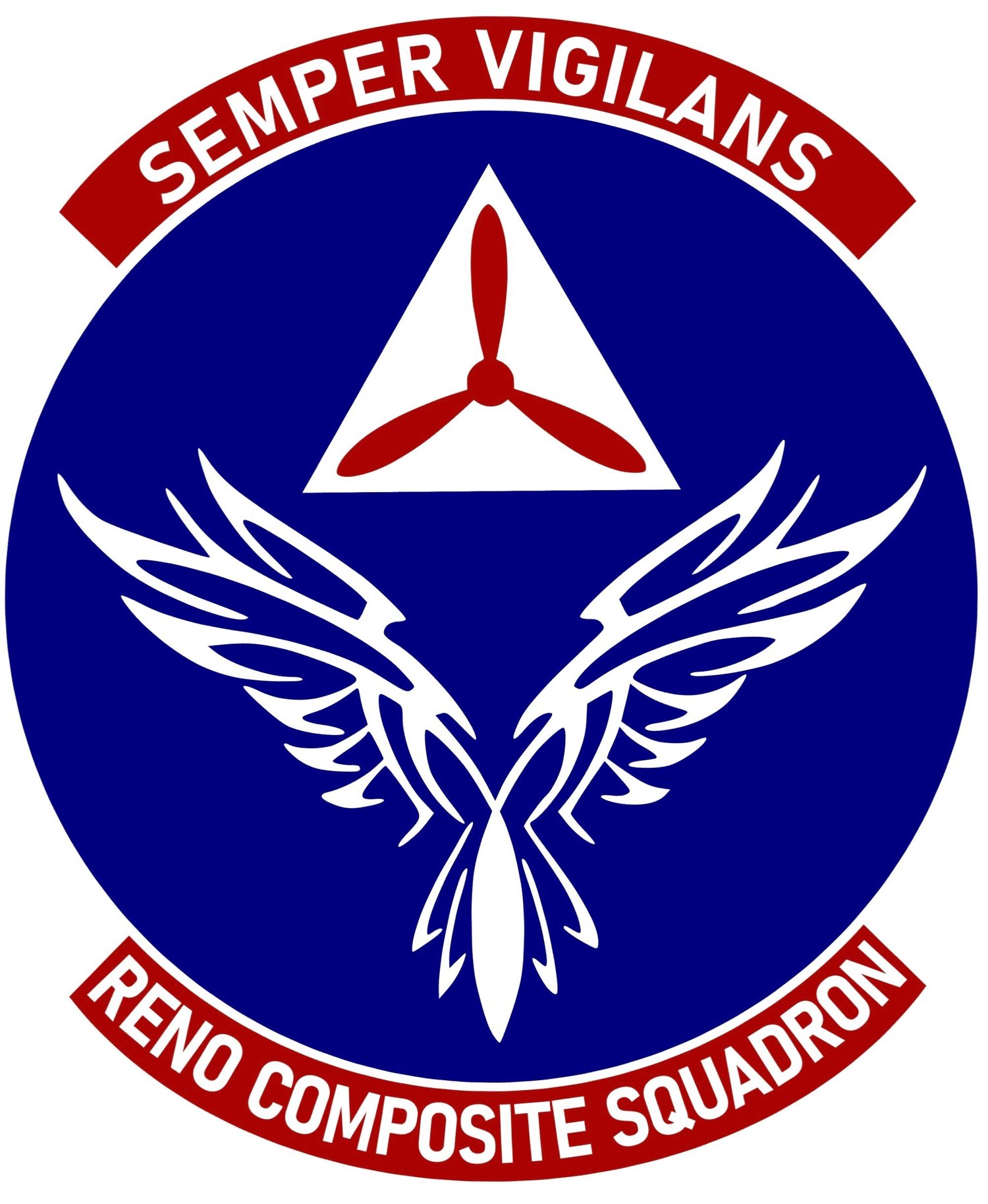FOR IMMEDIATE RELEASE
June 5, 2020
By Air or Ground, Local Civil Air Patrol Units Deliver For Nevadans Across The State
RENO, Nev. The Nevada Wing Civil Air Patrol squadrons in Reno, Las Vegas, Douglas County, Humboldt County, and Elko are working in conjunction with the Nevada Department of Emergency Management to transport essential medical items in support of the COVID-19 pandemic. As mission taskings dictate they will be utilizing their Cessna 182, 206 and GippsAero GA-8 AirVan aircraft, along with squadron ground vehicles to reach outlying areas in Nevada.
For those unfamiliar with GippsAero and their GA-8 AirVan, it is well suited to moving large amounts of cargo (up to 1300 lbs.). Normally configured for seating eight passengers, it is normally used for crew transport, aerial assessments, and carrying local government leaders.
Three of these missions were completed during the last week using ground transport from Reno to Humboldt County (Winnemucca). At the Winnemucca Municipal Airport, Reno Civil Air Patrol volunteers transferred Personal Protective Equipment (PPE) to Elko and Humboldt County Civil Air Patrol teams. These teams made deliveries to rural medical providers in Elko and McDermitt, as well as dropping supplies to a medical provider in Winnemucca. At the same time, in southern Nevada, members of the Las Vegas Composite squadron picked up and drove PPE from a Las Vegas location to a medical provider 180 miles to the northeast in rural Pioche, Nev.
On Wednesday, May 27, and Thursday, May 28, Nevada Wing CAP teams delivered PPE supplies other rural communities, including Duckworth, Schurz, Yerington, Hawthorne, Owyhee, Ely, and Eureka. Winnemucca and Elko also received more supplies.
Throughout April and May, members of the Wing’s southern Nevada squadrons, in conjunction with Helping Hands of Las Vegas Valley, packaged and delivered emergency supplies, food, toilet paper, and other necessary supplies to the elderly and other COVID-19 at-risk groups in the southern end of the state. The dedicated volunteers of Jack Schofield Cadet Squadron (Henderson, Nev.) also assembled and delivered face covers and plastic face shields to several area groups.
Since the beginning of this pandemic in Nevada, Civil Air Patrol members and supporters have been on the frontlines doing what each one can for their neighbors and fellow citizens. Humboldt County Composite Squadron cadet Seamus Maloon, using a 3-D printer and with the help of a high school technical advisor, manufactured plastic face shields for his local hospital’s frontline staffers.
“One of Civil Air Patrol’s core tenets is helping our community, state, and nation. I cannot think of a more fitting way for our members to assist in the disaster relief efforts brought forward by the COVID-19 pandemic. When needed, we rally our members and resources to help our friends, families, and neighbors through any crisis.” 1st Lt Mark Aguiar, CAP, Nevada Wing Public Information Officer.
Colonel Russell Smith, Nevada Wing Operations Officer, has contacted the
Squadrons in Northern Nevada, including the Tahoe-Truckee Composite Squadron in California to set up stand-by crews daily for missions as they arise.
The volunteers of the Civil Air Patrol stand ready to serve our communities in Nevada and across the nation.
Civil Air Patrol is the longtime auxiliary of the U.S. Air Force and as such is a valued member of its Total Force. In its auxiliary role, CAP operates a fleet of 560 single-engine aircraft and 1,500 small Unmanned Aircraft Systems (sUAS). It performs about 90 percent of continental U.S. inland search and rescue missions as tasked by the Air Force Rescue Coordination Center and is credited by the AFRCC with saving an average of 82 lives annually. CAP’s 66,000 members also perform homeland security, disaster relief and drug interdiction missions at the request of federal, state and local agencies. Operating as a nonprofit organization, CAP also plays a leading role in STEM/aerospace education, and its members serve as mentors to 28,000 young people participating in CAP’s Cadet Programs. Visit www.CAP.News or www.GoCivilAirPatrol.com for more information.
Photo cutlines and links:
· COVID-1, Cadet and senior Civil Air Patrol members were staging parts for plastic face mask assembly. Link: https://cawgcap-my.sharepoint.com/:i:/g/personal/timothy_vaughan_orwgcap_org1/EexjPf64luhFuEOXP4BOsgEBgyYBPmcOUReS7MyWrXN89w?e=l1KpzJ
· COVID-2, Squadron cadets and senior members with Helping Hands of Las Vegas Valley volunteers assembling food deliveries for at-risk senior citizens. Link: https://cawgcap-my.sharepoint.com/:i:/g/personal/timothy_vaughan_orwgcap_org1/ET7TWjzP6-9IoNNVKLcdsxQBD9TPa466VUcT6jSyJOa87w?e=7KdcWd
· COVID-3, Schofield Cadet squadron, Cadet Flores brings vital foodstuffs to seniors in the community. Link: https://cawgcap-my.sharepoint.com/:i:/g/personal/timothy_vaughan_orwgcap_org1/EQew8uqcv8tGp8qOB4--ZJ0B8vTHeZEKv3o3eQ5JODL9eQ?e=p9xGVc
· COVID-4, Humboldt County Composite squadron cadet Seamus Maloon alongside the 3-D printer he used to make plastic face shields for Humboldt General Hospital staff. Link: https://cawgcap-my.sharepoint.com/:i:/g/personal/timothy_vaughan_orwgcap_org1/EaBDtDHajRxIvM8miyLnYugBI03XJ11E6tvCM1k1jZOD_Q?e=aljRi2
· COVID-5, Col Deborah Pierce, Nevada Wing Commander, pitches in to help deliver PPE to Hawthorne, NV. May 28, 2020. Link: https://cawgcap-my.sharepoint.com/:i:/g/personal/timothy_vaughan_orwgcap_org1/ERPGpWAFo3JPh5haJEYGypcBRMOCmuLFMAq0Yc_ifcZUHg?e=euaZaj
· COVID-6, Maj Diana Jones and Lt Col Kelly Howard both of the Elko Composite Squadron checking PPE supplies on May 27, 2020. Link: https://cawgcap-my.sharepoint.com/:i:/g/personal/timothy_vaughan_orwgcap_org1/Ec8bhfLijTFNlzkn3pMb32UBMWBL1_EU80mvzrrilpf7LA?e=XkBdM1
· COVID-7, Capt Teddy Leigh with a delivery of COVID-19 Test Kits ready for distribution on May 27, 2020. Link: https://cawgcap-my.sharepoint.com/:i:/g/personal/timothy_vaughan_orwgcap_org1/EZlFAb9kKsZEmuMY2PJrTTwBSoXFVzL74RLuMyTVaC-kAw?e=XQTVqz
· COVID-8, Five Nevada Army Guard members with Nevada Air Guard members (behind L-R) Tech. Sgt. Torrey Eldridge and Tech. Sgt. Brian Skach, 152nd Communications Flight helping (L-R) 2nd Lt Jon Plamondon, Capt Michael Cleveland, Maj Dale Brown, Douglas County Composite Squadron, CAP, loaded up and ready to distribute to remote Northern Nevada communities, May 27, 2020. Link: https://cawgcap-my.sharepoint.com/:i:/g/personal/timothy_vaughan_orwgcap_org1/Eaz_sZMdAkpAhgaLEYOfKU4Bcx6acbcNCTshqIyy7ILHFQ?e=QmCP23
Media Contacts:
Capt. Mark Silver
Public Affairs Officer
Reno Composite Squadron
1st Lt. Timothy Vaughan
Public Affairs Officer
Humboldt County Composite Squadron
# # #
